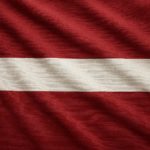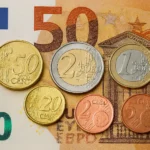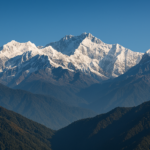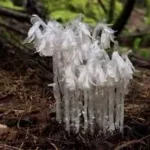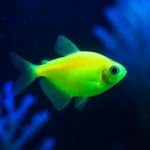
The Kingdom of Scotland was founded in 843 AD, when King Kenneth MacAlpin united the kingdoms of Dalriada and Pictland. Prior to this, Scotland was made up of several independent tribes and kingdoms. The founding of the Kingdom of Scotland marked the beginning of a distinct Scottish identity, separate from the other Celtic nations of the British Isles.
Facts about Scotland:
Scotland has a population of approximately 5.5 million people, making it one of the smaller countries in Europe. Despite its size, Scotland has made significant contributions to the fields of science, literature, and the arts. Famous Scottish figures include David Hume, Robert Burns, and Sir Walter Scott.
The Scottish flag, also known as the Saltire, dates back to the 9th century. According to legend, the flag was inspired by the cross of St. Andrew, who is said to have been martyred on an X-shaped cross. The Saltire is now widely recognized as a symbol of Scottish identity and is flown at many events and celebrations.
Scotland has over 790 islands, with only around 130 of them inhabited. The islands range in size from tiny, uninhabited islets to larger land masses like the Isle of Skye and the Isle of Arran. The islands are home to a variety of wildlife, including puffins, otters, and seals, as well as unique cultural traditions and dialects.
The national animal of Scotland is the unicorn. Although it may seem like an unusual choice, the unicorn has been a symbol of Scotland for centuries. In fact, the unicorn is featured prominently on the Scottish coat of arms, alongside the lion of England. The choice of the unicorn as a national symbol is believed to represent purity, innocence, and strength.
Edinburgh is the capital city of Scotland. Located in the southeastern part of the country, Edinburgh is known for its stunning architecture, rich history, and vibrant cultural scene. The city is home to many famous landmarks, including Edinburgh Castle, the Royal Mile, and the Scott Monument. Each year, the city hosts the Edinburgh Festival, a celebration of the arts that attracts visitors from around the world.
The official languages of Scotland are English, Gaelic, and Scots. English is the most widely spoken language in the country, but Gaelic and Scots are also spoken in certain areas. Gaelic, a Celtic language that was once widely spoken throughout Scotland, is now only spoken fluently by a small percentage of the population. Scots, a Germanic language similar to English, is more widely spoken but is not recognized as an official language.
The Scottish currency is the pound sterling. Like the rest of the United Kingdom, Scotland uses the pound sterling as its official currency. However, there have been calls in recent years for Scotland to adopt its own currency in the event of independence from the UK. The idea of a Scottish currency has been debated by politicians and economists, with supporters arguing that it would provide more economic stability and control.
The Scottish Parliament was reconvened in 1999, after being dissolved in 1707. The Scottish Parliament is responsible for making laws and governing Scotland, and is made up of 129 elected members. Since its reconvening, the Scottish Parliament has been granted increased powers over areas such as health, education, and transport. However, some politicians and activists continue to push for full independence from the UK.
The highest peak in Scotland is Ben Nevis, which stands at 1,345 meters. Located in the Scottish Highlands, Ben Nevis is a popular destination for hikers and climbers. Despite its relatively modest height, Ben Nevis can be challenging to climb due to unpredictable weather conditions and rugged terrain. However, the stunning views from the summit make the climb well worth the effort.
The Loch Ness Monster, also known as “Nessie,” is a legendary creature said to inhabit Loch Ness in the Scottish Highlands. Sightings of Nessie date back to the 6th century, but there is no scientific evidence to support the existence of the creature. Nevertheless, the legend of Nessie has become a popular part of Scottish folklore and attracts tourists from around the world.
Scotch whisky is one of Scotland’s most famous exports. The process of making whisky has been a part of Scottish culture for centuries, and the country is known for producing some of the best whiskies in the world. Scotch whisky is distilled from malted barley, water, and yeast, and is aged in oak casks for at least three years. There are five regions in Scotland that are known for producing whisky: Speyside, Highland, Lowland, Islay, and Campbeltown.
St. Andrews is known as the “Home of Golf.” Located in Fife, Scotland, St. Andrews is considered the birthplace of golf. The town is home to the Old Course at St. Andrews, which is one of the oldest and most famous golf courses in the world. The course has hosted many prestigious golf tournaments, including the Open Championship.
The Scottish Enlightenment was a period of intellectual and cultural growth that occurred in Scotland during the 18th century. The movement was characterized by a focus on reason, science, and individual liberty. Famous figures associated with the Scottish Enlightenment include David Hume, Adam Smith, and Francis Hutcheson.
The Battle of Culloden, which took place on April 16, 1746, was a significant event in Scottish history. The battle was fought between the Jacobites, who sought to restore the Stuart dynasty to the British throne, and the British government forces. The Jacobites were defeated, and the battle marked the end of the Jacobite rebellion and the beginning of a period of repression of Scottish culture and traditions.
Robert Burns, also known as the “Bard of Scotland,” is Scotland’s national poet. Burns is known for his lyrical poetry and his contributions to Scottish culture. Many of Burns’ works, such as “Auld Lang Syne” and “Tam O’Shanter,” are still widely recognized and celebrated today.
Glasgow is Scotland’s largest city, with a population of over 600,000 people. The city is known for its industrial heritage, vibrant music scene, and friendly people. Glasgow is also home to many famous landmarks, including the Glasgow Cathedral, the Kelvingrove Art Gallery and Museum, and the Clyde Auditorium.
The Kelpies are two massive sculptures of horse heads located in Falkirk, Scotland. The sculptures, which stand at 30 meters tall, were designed by Scottish artist Andy Scott and completed in 2013. The Kelpies are a tribute to the horse-powered heritage of Scotland and have become a popular tourist attraction.
Mary, Queen of Scots, was one of Scotland’s most famous monarchs. Mary became queen at the age of six days, and her reign was marked by political turmoil and personal tragedy. Mary was eventually forced to abdicate the throne and was imprisoned by her cousin, Queen Elizabeth I of England. Mary was eventually executed in 1587, but her legacy as a tragic figure in Scottish history has endured.
The Highland Games are a series of traditional Scottish athletic events that take place throughout the summer months. The games feature events such as caber tossing, hammer throwing, and tug-of-war. The games also feature traditional Scottish music and dancing, and are a celebration of Scottish culture and heritage.
Edinburgh Castle is one of Scotland’s most famous landmarks. The castle, which is perched atop an extinct volcano in Edinburgh, has been a royal residence and military stronghold for centuries. The castle has played a key role in Scottish history, including during the Wars of Scottish Independence and the Jacobite rebellions. Today, the castle is a popular tourist attraction and home to the Scottish Crown Jewels.
The Forth Bridge, located near Edinburgh, is a UNESCO World Heritage Site and an iconic symbol of Scotland. The bridge, which spans the Firth of Forth, was completed in 1890 and is considered one of the greatest engineering achievements of the Victorian era. The bridge is still in use today and is an important transportation link between Edinburgh and the north of Scotland.
The Shetland Islands, located off the coast of Scotland, are known for their rugged beauty and unique culture. The islands are home to the Shetland pony, a small but sturdy breed of horse that has been a part of Shetland culture for centuries. The islands are also known for their traditional music and dance, including the Up Helly Aa festival, which celebrates Shetland’s Viking heritage.
The Isle of Skye, located in the Inner Hebrides, is one of Scotland’s most scenic destinations. The island is known for its dramatic landscapes, including the Cuillin mountain range and the Fairy Pools. Skye is also home to a rich cultural heritage, including the Gaelic language, traditional music, and the iconic Highland cow.
The Edinburgh Festival Fringe is the largest arts festival in the world, attracting thousands of performers and visitors to the city each year. The festival, which began in 1947, features a diverse range of performances, including theatre, comedy, music, and dance. The festival has launched the careers of many famous performers, including Rowan Atkinson, Stephen Fry, and Emma Thompson.
Scotland has a rich sporting history, with football and rugby being among the most popular sports in the country. The Scottish national football team has a long-standing rivalry with the English team, and their matches are always highly anticipated. In addition to their World Cup appearances, the Scottish team has also competed in the UEFA European Championship several times.
The first ever international rugby match between Scotland and England took place on March 27, 1871, at Raeburn Place in Edinburgh. The match was a significant moment in the history of rugby and set the stage for the development of the sport around the world. Rugby remains a popular sport in Scotland, with the national team competing in the Six Nations Championship and the Rugby World Cup.
Scotland has a proud tradition of innovation and invention, with many famous inventors hailing from the country. Alexander Graham Bell, who was born in Edinburgh, is credited with inventing the telephone, while John Logie Baird is known for his work in developing television technology. James Watt, who was born in Greenock, is considered one of the most important figures of the Industrial Revolution and is known for his improvements to the steam engine. These inventors have had a profound impact on the world and their legacies continue to inspire new generations of innovators.
